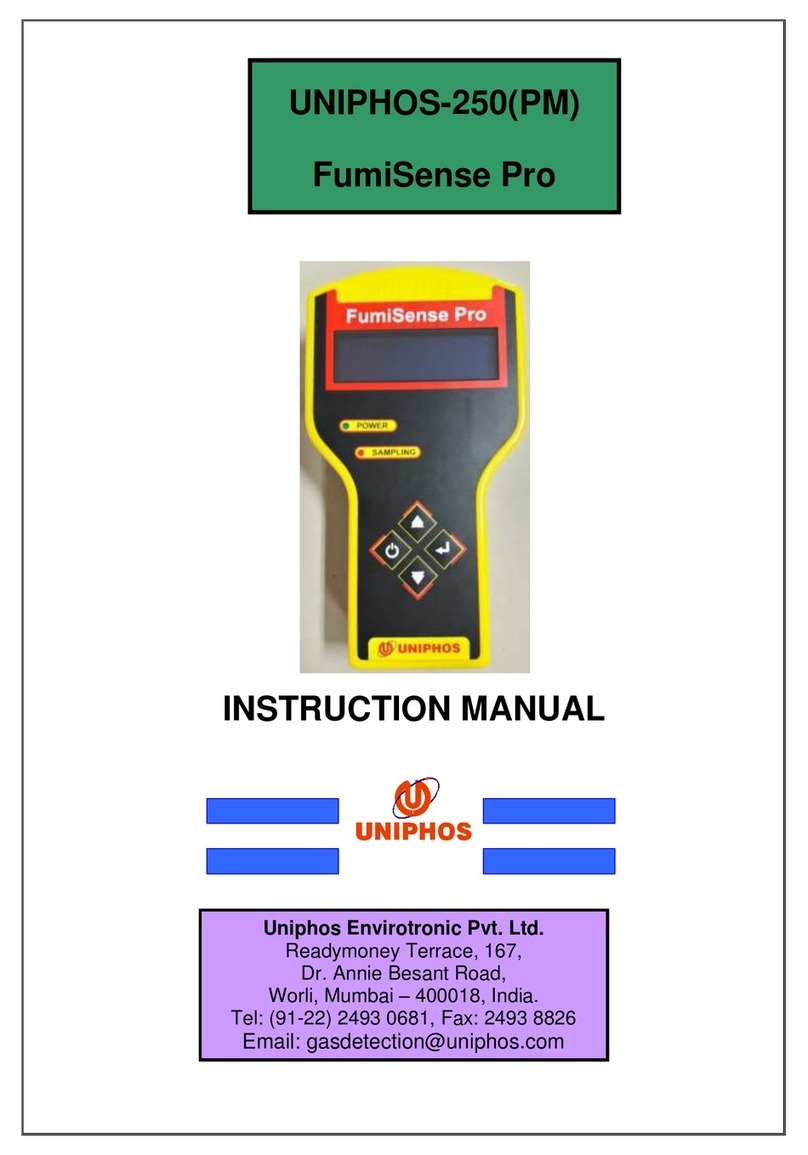
2.6 To draw more than 100 cc, (one stroke) free the handle by rotating it 90 degrees and push back
thepistonshafttoitsoriginalpositionwithoutremovingthedetector tube.Pull thepump handle
again, for the second stroke. These steps can be repeated to get the desired number of
strokes.
2.7 The target gas concentration is directly obtained on the detector tube scale.
3. INSPECTION OF THE PUMP
Before use, the pump should be checked for air leak. The following steps are
recommended.
3.1 Insert a new detector tube without breaking its ends into the rubber tube connector.
3.2 Align the red dots and pull the pump handle a full stroke.
3.3 Wait for three minutes, and release the pump handle by turning 90 degrees on left or
right and slowly allowing the piston to come back by holding the handle.
3.4 If it does not come back completely to its original position it means that there is a leak in
the pump, the cause for which could be one of those described in section 4 under
maintenance.
4. MAINTENANCE
The pump needs occasional maintenance.
4.1 Greasing the barrel and replacing the plunger gasket:

























